Asbest onderzoek BRL2018 / NEN 5707
BRL 2018 - Asbestos research process
Date: 11-02-2021
Writer: Extern / Roelof Zwaan
This memo is about the workprocess of fieldworkers that perform soil research in compliance with the BRL 2018 in the field and register their data into TerraIndex.
This document describes the processes mentioned in the flowcharts related to the SIKB BRL2018 processes. Below is a legend of the symbols used in the process flowcharts.
Contents
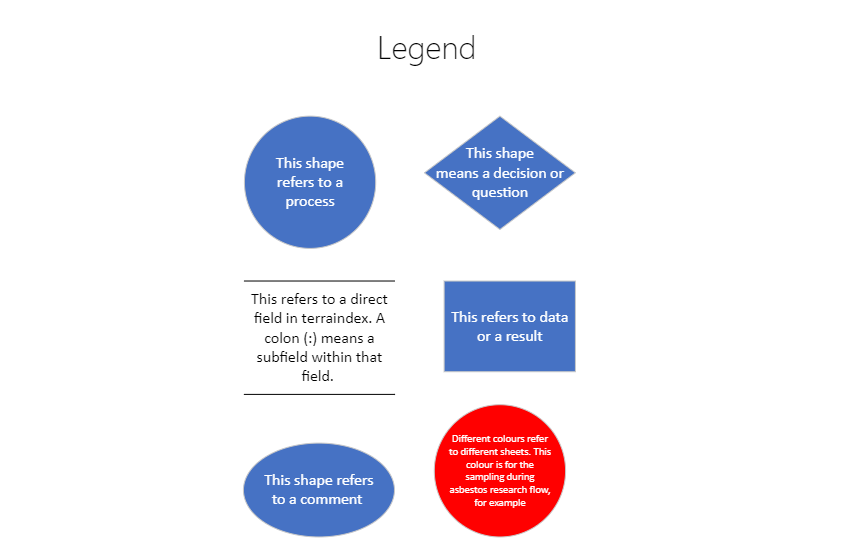
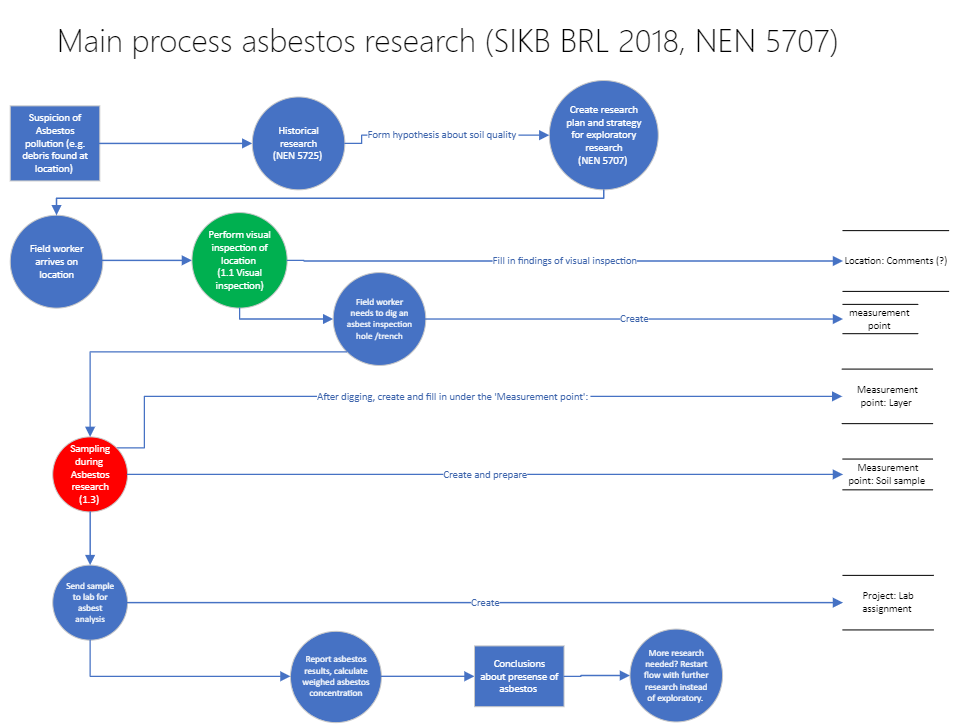
This flow, in very basic steps, describes the process of doing asbestos research, using the SIBK BRL 2018 and the NEN5707 / NEN 5897 as a guideline. This flow is there to give a basic idea of the processes in asbestos soil research.
First, historical research (NEN 5725) has to be done to be able to make an initial strategy for the research plan. Once the fieldworker arrives at the location, a visual inspection of the ground level has to be done, if possible. (If the suspicion of asbestos is in a lower layer of soil, e.g. 0,5-1m, there's no need for an inspection) The process of an asbestos inspection is explained in 1.1
After the field inspection, an hole needs to be drilled. There are two types of inspection holes in asbestos research, an asbestos inspection hole (usually 0,3m in diameter, x 0,5m in depth) for explorative research and an asbestos trench for further research (usually 0,3m wide, at least 200cm long but this can differ depending on the research location / research plan!). The process of sampling asbestos is explained in more detail in section 1.2.
After sampling the sample needs to be properly packaged and marked to send towards a lab for analysis.
1.1 Visual inspection of Asbestos research
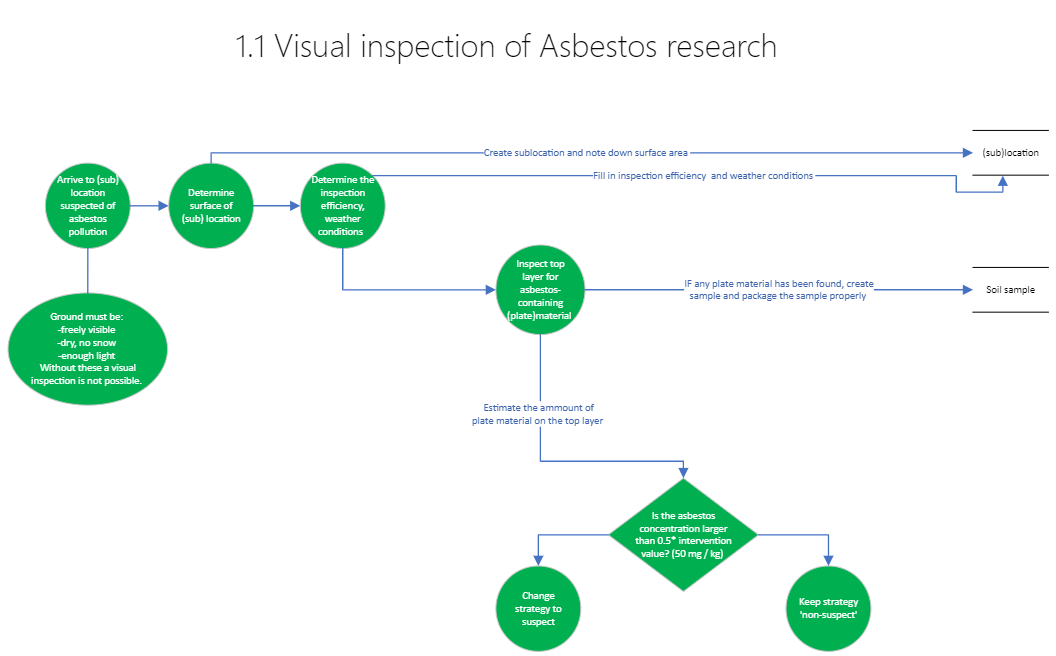
This protocol concerns the visual inspection of the location during asbestos research.
During the visual inspection, the fieldworker has to look for the occurrence of asbestos (plate) material on the top layer of the soil. Within this inspection there are several circumstances that can influence the efficiency of the inspection, these can be weather conditions, vegetation or coverage of the soil with pavements / tiles for example. This can all be taken into account to make a measure of inspection efficiency. If the soil is covered with a pavement, visual inspection of the field is not possible.
If asbestos material is found, the type of material and the weight has to be noted. If coverage of asbestos material is more than 100cm2 per m2, the area has to be divided in a raster of 5x5m squares, and inspect several of those squares separately through random sampling.
If after the visual inspection, the estimated asbestos content is more than 50mg/kg, the hypothesis of the research has to be adjusted to 'Suspected location', which will increase the research intensity.
1.2 Sampling during Asbestos research
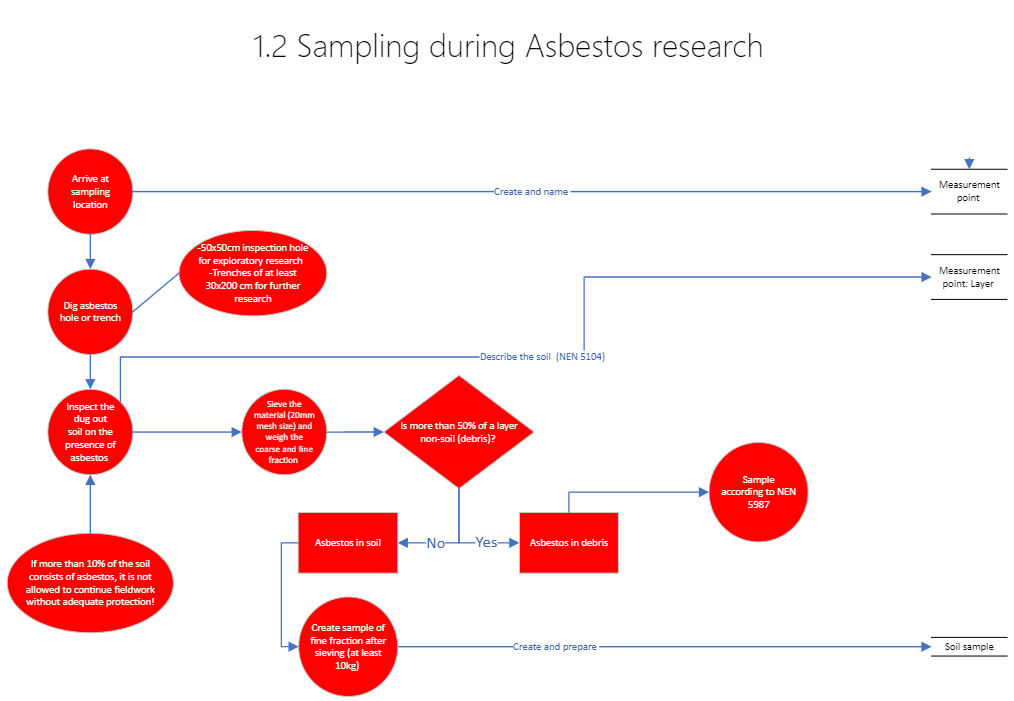
Once arrived at a sampling location, the fieldworker needs to dig either an asbestos hole or an asbestos trench. The type is dependent on whether the research is explorative or further research. For further research, trenches are used to allow for a more thorough inspection of the location.
If the soil has a large percentage of debris mixed in, at least one of the measuring points has to reach a depth with a visually clean layer of soil or until 2m-gl is reached. The soil gets deposited next to the measuring point and the layers of the soil are described as per NEN 5104.
The dug-out soil gets inspected for debris and asbestos-plate material. If the debris content in the sample is more than 50%, it cannot be classified as soil and will have to be sampled as an asbestos in debris sample, conform NEN 5897.
Before taking a sample, the soil will be sieved through a 20mm mesh, and the fine fraction / coarse fraction are both weighed. The fine fraction will be sampled in a field sample, the coarse fraction gets inspected for asbestos material. Any found plate material has to be sampled separately and analysed according to NEN 5896.
After sampling at least 10kg of the material per field sample (can be from multiple measuring points), the sample has to be packaged properly and delivered to the lab for analysis.
1.3 NEN 5897 Asbestos in Debris
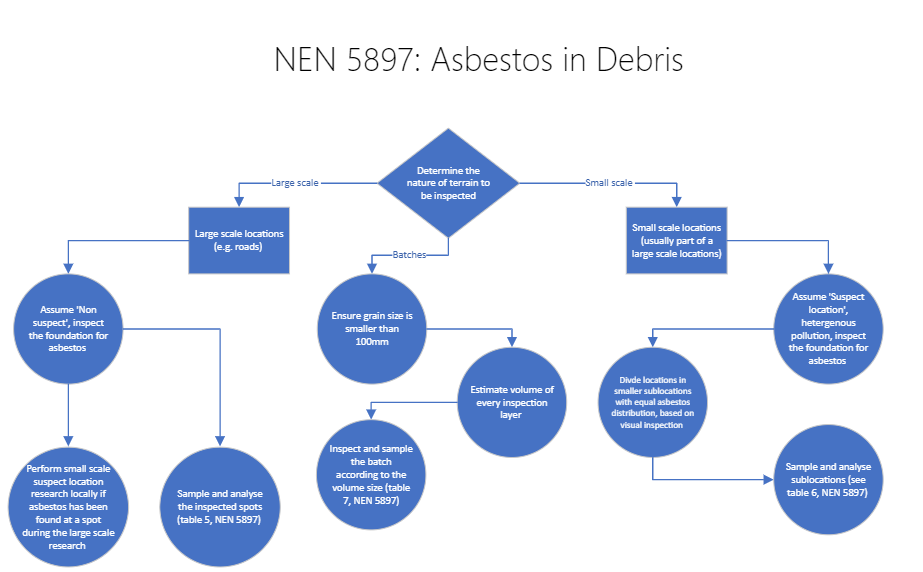
For the sampling of asbestos in debris, a different research methodology and sampling is used. For large scale locations, randomly sampled points are inspected for asbestos. If suspicious material is found, a small-scale research is performed locally at that point. If no material has been visually determined the debris is sampled normally and analysed conform NEN 5898. If any asbestos has been found in analysis, again a small-scale research will be performed locally.
Small sample locations in debris are always researched according to the 'Suspect location' hypothesis. If applicable the area is divided in smaller sublocations and each of the sublocations is inspected and sampled according to the size of the location, see table 6 in the NEN 5897.
Batch tests on asbestos according to NEN 5897 can only be done if the grain size is smaller than 100mm, otherwise a different protocol has to be used. For batch sampling a volume metric is used to sample the debris, see table 7 in the NEN 5897. The volume (per different layers) determines the number of spots to inspect and samples to take.